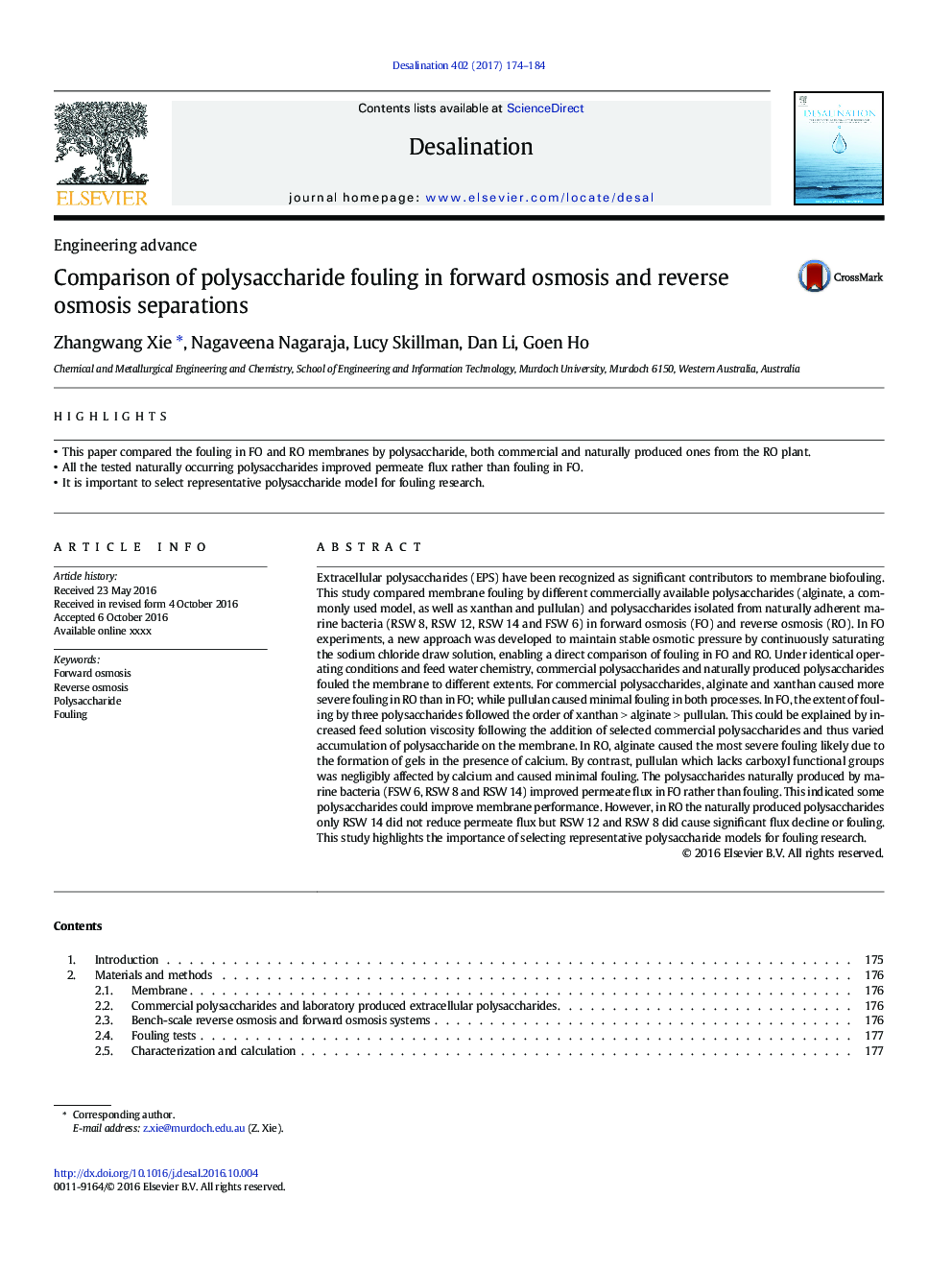| Article ID | Journal | Published Year | Pages | File Type |
|---|---|---|---|---|
| 4987992 | Desalination | 2017 | 11 Pages |
Abstract
Extracellular polysaccharides (EPS) have been recognized as significant contributors to membrane biofouling. This study compared membrane fouling by different commercially available polysaccharides (alginate, a commonly used model, as well as xanthan and pullulan) and polysaccharides isolated from naturally adherent marine bacteria (RSW 8, RSW 12, RSW 14 and FSW 6) in forward osmosis (FO) and reverse osmosis (RO). In FO experiments, a new approach was developed to maintain stable osmotic pressure by continuously saturating the sodium chloride draw solution, enabling a direct comparison of fouling in FO and RO. Under identical operating conditions and feed water chemistry, commercial polysaccharides and naturally produced polysaccharides fouled the membrane to different extents. For commercial polysaccharides, alginate and xanthan caused more severe fouling in RO than in FO; while pullulan caused minimal fouling in both processes. In FO, the extent of fouling by three polysaccharides followed the order of xanthan > alginate > pullulan. This could be explained by increased feed solution viscosity following the addition of selected commercial polysaccharides and thus varied accumulation of polysaccharide on the membrane. In RO, alginate caused the most severe fouling likely due to the formation of gels in the presence of calcium. By contrast, pullulan which lacks carboxyl functional groups was negligibly affected by calcium and caused minimal fouling. The polysaccharides naturally produced by marine bacteria (FSW 6, RSW 8 and RSW 14) improved permeate flux in FO rather than fouling. This indicated some polysaccharides could improve membrane performance. However, in RO the naturally produced polysaccharides only RSW 14 did not reduce permeate flux but RSW 12 and RSW 8 did cause significant flux decline or fouling. This study highlights the importance of selecting representative polysaccharide models for fouling research.
Related Topics
Physical Sciences and Engineering
Chemical Engineering
Filtration and Separation
Authors
Zhangwang Xie, Nagaveena Nagaraja, Lucy Skillman, Dan Li, Goen Ho,
